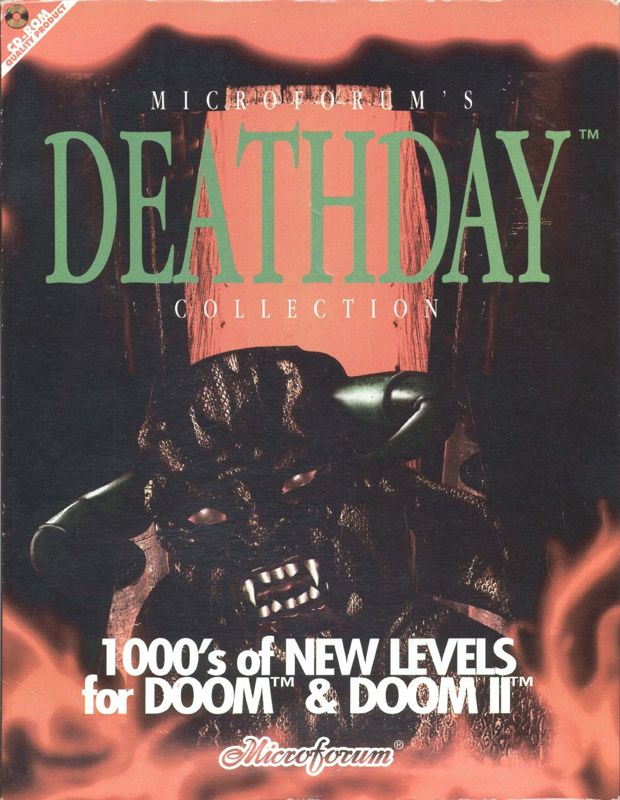Retro Replay Review
Gameplay
Deathday Collection delivers an avalanche of fresh challenges by bundling over 1,000 new levels for both DOOM and DOOM II: Hell on Earth. From tight, adrenaline-pumping arenas to sprawling multi-map campaigns, the sheer volume ensures that even the most seasoned marine will find hours—if not days—of varied play. Level design ranges from classic corridor battles to inventive puzzle segments, all while retaining the core run-and-gun feel that defined the originals.
One of the Collection’s strengths is its inclusivity of different player skill levels. With built-in cheats and hints and tricks files, newcomers who might find the punishing difficulty curve of a random WAD prohibitive can still experience the content at a comfortable pace. Veteran players, meanwhile, can disable these aids and tackle nightmare-tier challenges that push their map knowledge and twitch skills to the limit.
Beyond simply playing, Deathday Collection empowers users to craft their own adventures. Included editors let you tweak enemy placement, alter level geometry, or even build entirely new maps from scratch. This extendable framework transforms the pack from a static mod into a sandbox for aspiring designers, fostering a community of creators eager to share and refine WADs.
Finally, the grouping of levels into thematic folders and easy-to-use launchers means you won’t waste time hunting through directories. Whether you jump into a quick five-minute skirmish or tackle a marathon session of dozens of maps in sequence, the flow from one experience to the next is smooth and intuitive.
Graphics
While Deathday Collection honors the pixel-perfect aesthetic of early ’90s shooters, it also sprinkles in dozens of custom textures and sprites. Walls sport fresh color palettes, floor and ceiling designs range from infernal lava pits to ominous alien circuitry, and new enemy skins provide a surprising level of variety to the familiar fiends.
Some maps go so far as to include higher-resolution assets that, when paired with modern source ports, offer a semi-HD experience without losing the original’s retro charm. The transition between classic and enhanced visuals is generally seamless, though a few levels exhibit minor mismatches in lighting or sprite scale. These quirks, however, are rare and often overshadowed by the collections’ creative triumphs.
Audio also receives an upgrade: dozens of new sound files and music tracks are packed in alongside the levels. Explosions crack sharper, pistol shots pop with more bite, and several maps boast uniquely composed tunes that set distinct moods—be it brooding tension in a fog-shrouded base or frantic metal riffs during a demon onslaught.
Overall, the graphics and audio enhancements in Deathday Collection strike a respectful balance between nostalgia and innovation. The pack never feels like a mismatched mod compilation; rather, it reads like a lovingly curated expansion that both preserves and refreshes the iconic DOOM aesthetic.
Story
True to the spirit of the original DOOM games, Deathday Collection isn’t driven by an epic narrative so much as a string of self-contained combat scenarios. That said, several standout WADs within the bundle introduce their own rudimentary plots—secret scientific experiments gone awry, demonic incursions on distant bases, or rescue missions in demon-infested hellscapes.
These mini-stories typically unfold through brief text interludes or map intros, setting the stage for each campaign without bogging the player down in exposition. For fans who appreciate a touch of context before diving into the carnage, these bite-sized narratives deliver just enough flavor to give each series of maps its own identity.
Many creators in the community have also added custom skyboxes, intermission screens, and rudimentary cutscenes, further enhancing the sense of progression between levels. While you won’t find branching dialogue or cinematic storytelling, the Collection’s modular design allows for a surprising array of atmospheres—from foreboding research labs to gothic hellcathedrals.
In essence, Deathday Collection embraces the classic DOOM ethos: story as a backdrop to frenetic action. Yet by allowing individual authors to inject their own themes and twists, the pack creates a patchwork of micro-narratives that keep each playthrough feeling fresh and distinct.
Overall Experience
For anyone who cut their teeth on the original DOOM titles—or modern source-port aficionados seeking nonstop content—Deathday Collection feels like striking gold. Over 1,000 maps translate directly into countless hours of battles, exploration, and discovery, making the package exceptional value for its price point.
Installation is streamlined, requiring only a compatible DOOM IWAD and your preferred port. Once up and running, the included map launcher offers quick sorting by difficulty, author, or theme, so you can tailor sessions on the fly. The seamless integration of cheats, hints, and sound-graphic packs means you can jump in without hunting down separate downloads.
No compilation this large can maintain uniform quality, and you will inevitably encounter a few underwhelming or overly obtuse levels. Minor technical hiccups—such as palette mismatches or arcane scripting quirks—crop up here and there, but passionate modders continually release patches to smooth out these rough edges.
Ultimately, the Deathday Collection is a testament to DOOM’s lasting appeal and the vitality of its modding community. Whether you’re a nostalgic veteran or a newcomer curious about the pioneering roots of first-person shooters, this gargantuan WAD archive promises endless thrills and a front-row seat to thousands of creative visions. Highly recommended for anyone looking to expand their DOOM library far beyond the original episodes.
 Retro Replay Retro Replay gaming reviews, news, emulation, geek stuff and more!
Retro Replay Retro Replay gaming reviews, news, emulation, geek stuff and more!




Reviews
There are no reviews yet.